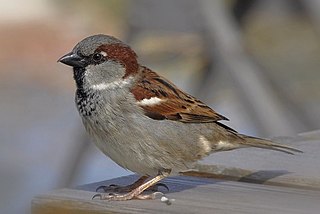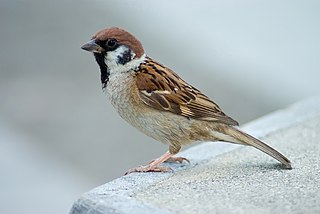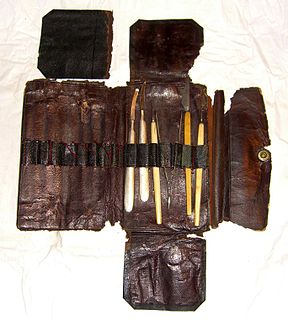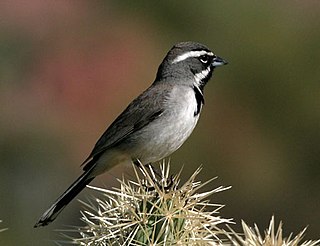
Old World sparrows are a family of small passerine birds. They are also known as true sparrows, names also used for a particular genus of the family, Passer. They are distinct from both the New World sparrows, in the family Passerellidae, and from a few other birds sharing their name, such as the Java sparrow of the family Estrildidae. Many species nest on buildings and the house and Eurasian tree sparrows, in particular, inhabit cities in large numbers, so sparrows are among the most familiar of all wild birds. They are primarily seed-eaters, though they also consume small insects. Some species scavenge for food around cities and, similarly to gulls or rock doves, will happily eat small quantities of virtually anything.

The house sparrow is a bird of the sparrow family Passeridae, found in most parts of the world. It is a small bird that has a typical length of 16 cm (6.3 in) and a mass of 24–39.5 g (0.85–1.39 oz). Females and young birds are coloured pale brown and grey, and males have brighter black, white, and brown markings. One of about 25 species in the genus Passer, the house sparrow is native to most of Europe, the Mediterranean Basin, and a large part of Asia. Its intentional or accidental introductions to many regions, including parts of Australasia, Africa, and the Americas, make it the most widely distributed wild bird.

The Eurasian tree sparrow is a passerine bird in the sparrow family with a rich chestnut crown and nape, and a black patch on each pure white cheek. The sexes are similarly plumaged, and young birds are a duller version of the adult. This sparrow breeds over most of temperate Eurasia and Southeast Asia, where it is known as the tree sparrow, and it has been introduced elsewhere including the United States, where it is known as the Eurasian tree sparrow or German sparrow to differentiate it from the native unrelated American tree sparrow. Although several subspecies are recognised, the appearance of this bird varies little across its extensive range.

The sagebrush sparrow is a medium-sized sparrow of the western United States and northwestern Mexico. It used to be placed in the genus Amphispiza, but evidence from 2007 and 2009 suggested it be placed in its own genus.

John Graham Bell was an American taxidermist and collector. He traveled with John James Audubon up the Missouri River in 1843. He also taught taxidermy to Theodore Roosevelt.

New World sparrows are a group of mainly New World passerine birds, forming the family Passerellidae. They are seed-eating birds with conical bills, brown or gray in color, and many species have distinctive head patterns.

Amphispiza is a genus of birds in the American sparrow family. It contains two species:

The Wyoming Basin shrub steppe ecoregion, within the deserts and xeric shrublands biome, is a shrub steppe in the northwestern United States.

Artemisiospiza is a genus of birds in the American sparrow family, formally described by Klicka and Banks, 2011. It contains two species:

Bell's sparrow is a medium-sized sparrow of the western United States and northwestern Mexico. It used to be placed in the genus Amphispiza, but recent evidence suggested it be placed in its own genus.
This page is based on this
Wikipedia article Text is available under the
CC BY-SA 4.0 license; additional terms may apply.
Images, videos and audio are available under their respective licenses.








